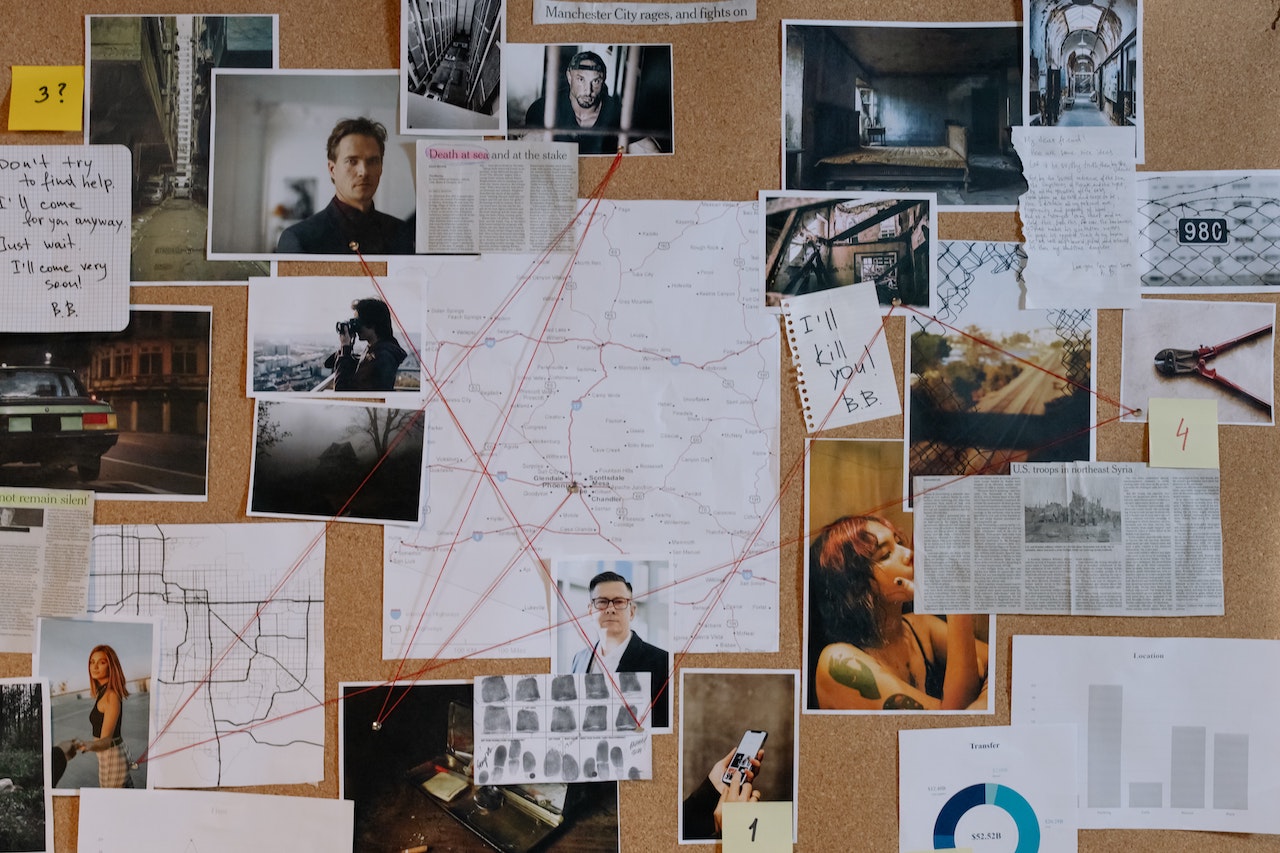Fingerprints, interviews, analysis of a crime scene, background checks – what do all of these things have in common? In an investigation, these pieces of information can all be used as evidence. Any good investigator knows that collecting the best evidence is crucial for building a credible case. This blog will take a deep dive into evidence, the different types, how it is collected, and why it is so crucial for investigations.
What is Evidence?
In an investigation, evidence is a wide array of information collected to support or disprove facts. Evidence can be anything from an eyewitness account to a fingerprint or hair left at the scene of a crime. If a piece of information is relevant to a case and may shed some light on an unknown, it might be helpful evidence.
Types of Evidence
Generally speaking, evidence can fall into two categories; direct and indirect evidence.
Direct Evidence
Evidence that shows or proves that an instance has occurred without the need for inference is direct evidence. For example, testimony from an individual who witnessed a specific event is considered direct evidence. (Note – a testimonial is a statement made under oath). Other information regarded as direct evidence includes audio recordings of someone confessing to a crime or video camera footage showing someone committing a crime. Both testimonial and physical evidence can also be considered direct evidence.
Indirect Evidence
Indirect evidence does not necessarily prove anything in a case, although it may provide a basis for inference about a fact. This type of evidence may include circumstantial evidence, which implies a fact without providing concrete proof. However, the more circumstantial evidence there is, the better it is for a case. For example, if there are footprints found at the scene of a burglary, this may narrow the scope of suspects, but not by much. If, however, strands of hair or clothing fibers are collected in addition to the footprints, the pool of potential offenders can be further narrowed down. The previous examples are all forms of physical evidence.
How to Collect Evidence
Evidence must be collected and preserved carefully so that nothing is altered, contaminated, or destroyed. Eyewitness evidence, for example, must be taken into careful consideration when being collected. Investigators should not ask leading questions, as this may alter the memory of the witness who is testifying, even if they are being as truthful as possible. Victims or witnesses of more serious, stressful crimes, such as an armed burglary, typically have a more precise memory of events.
Learn more: How to Conduct an Investigative Interview
On the contrary, some witnesses may not remember things as accurately. Children’s memories are not as clear as adults’, and those with mental illnesses or someone under the influence of drugs and alcohol may not provide entirely truthful testimony. Keeping these factors in mind when collecting testimonial evidence is essential for investigators.
Collecting physical evidence is also a careful process. The method of collecting physical evidence is different depending on what the evidence is. Most are collected in paper containers such as packets and bags. On the other hand, liquids are collected in non-breakable, leakproof containers, and arson evidence is collected in air-tight metal cans. The goal is to collect the evidence without altering or tampering with it.
Importance of Evidence for an Investigation
Evidence plays a critical role in an investigation. It allows investigators to rebuild events, determine the course of events, discover who the key participants are, and so on. Evidence is also presented in court to judges and juries to determine whether or not someone is guilty of a crime. It is an instrumental part of any investigation and is the key to solving any case.
Learn more: What is a Criminal Defense Investigator and How to Become One
Staying up-to-date and refreshing your knowledge on evidence is crucial for private investigator professionals. That’s why, at NITA, we offer a 4-hour course in Best Evidence for Investigations. Best Evidence for Investigations is a continuing education training course that discusses all types of evidence and how this relates to Investigators. This course will include the definition of evidence, common types of evidence, how evidence works in court, missing evidence, useless evidence, and evidence collection.
You might also like:
Our enrollment counselors are here to answer any questions you might have about our state- and board-approved status, pre-licensing training, or professional development programs.
The Ultimate Guide to the Private Investigator Test by State




